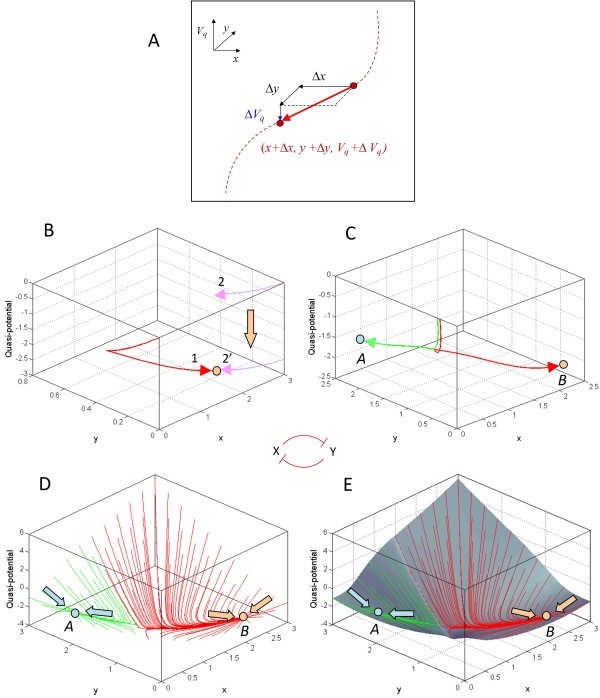Figure 2.
Computing the epigenetic landscape for a bistable switch based on a double-negative feedback circuit of two genes x and y. (A) Paths followed by a simulated cell on the epigenetic landscape are obtained by integrating the change in quasi-potential ΔVq (Eq. 4 in text) along a trajectory as a function of time. (x+Δx) and (y+Δy) give the new position at each step along the trajectory in x-y phase space, while (Vq+ΔVq) gives the new elevation on the quasi-potential surface. The initial value of the quasi-potential at the start of any individual trajectory is arbitrarily set to zero. (B) Two trajectories (1 and 2) that converge to the same attractor on the x-y phase plane are aligned vertically so that both trajectories also converge to the same quasi-potential level. (C) Two trajectories that originate at adjacent points on the phase plane but converge to different attractors A and B are aligned vertically so that the initial quasi-potential levels of the two trajectories are equal. (D) Multiple trajectories starting from different points on the x-y phase plane are then aligned as described in panels B and C. To identify distinct basins of attraction, trajectories are shown colored according to the attractor to which they converge (arrows). This two-gene double-negative feedback circuit produces a bistable system with two attractors A and B. (E) Finally, interpolation among multiple trajectories aligned across the phase plane produces the epigenetic landscape.

